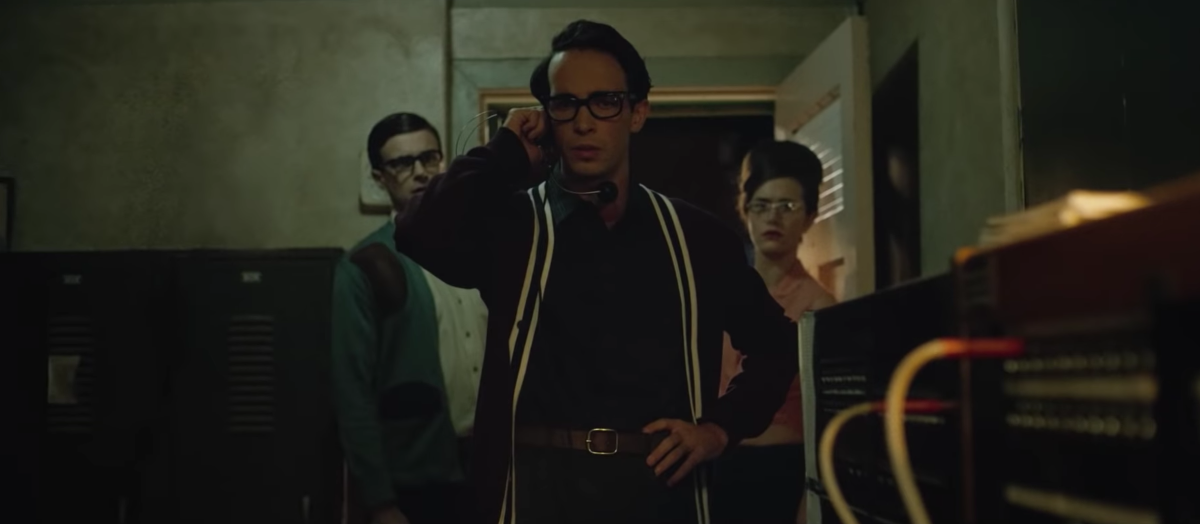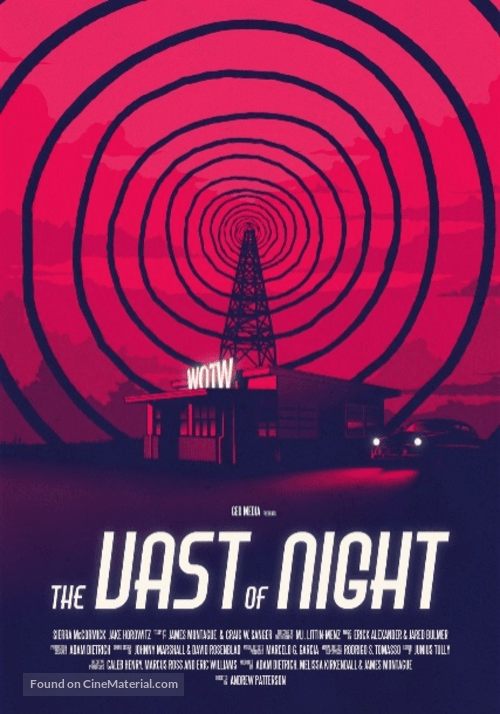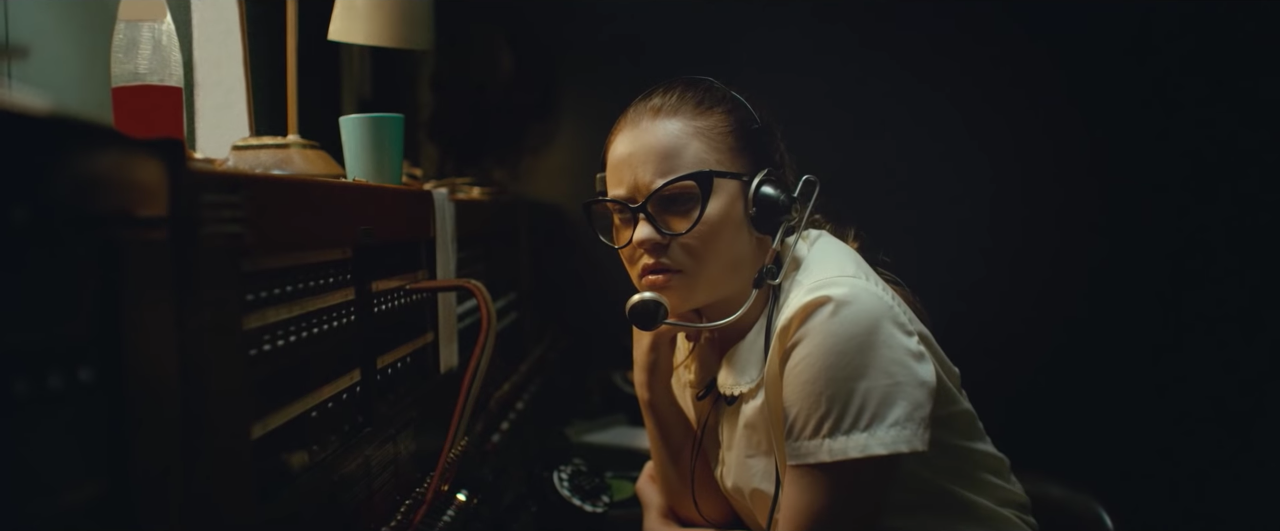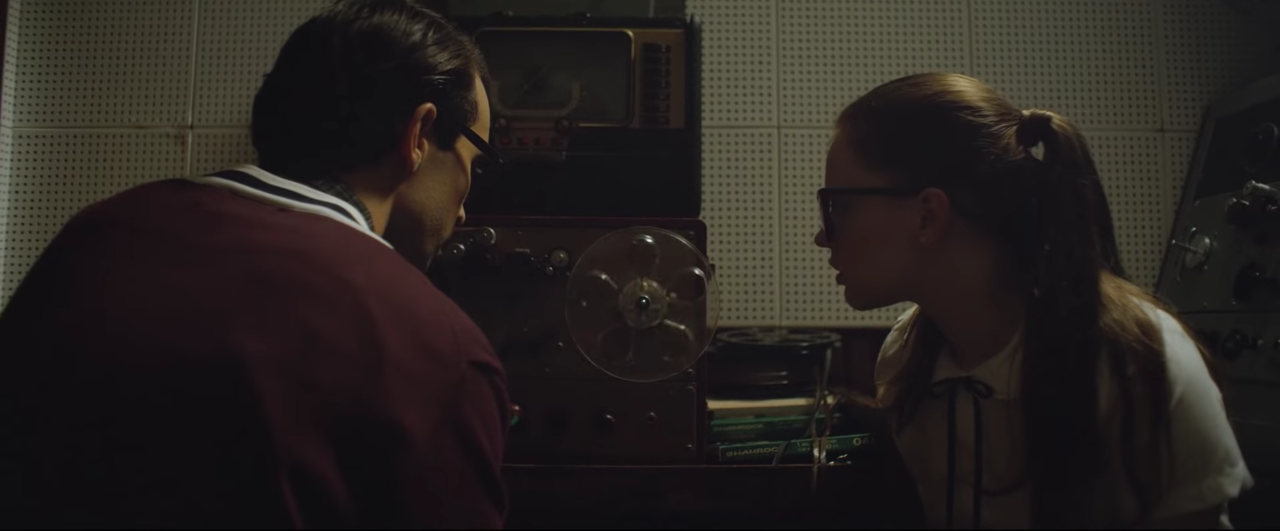

“You are entering a realm between clandestine and forgotten, a slipstream caught between channels, the secret museum of mankind, the private library of shadows, all taking place on a stage forged from mystery and found only in a frequency caught between logic and myth. You are entering Paradox Theater.”
First time feature director Andrew Patterson draws on a wellspring of uncanny historical happenings in New Mexico to craft an eerie period drama on a budget. With a script from James Montague and Craig W. Sanger, the retro sci-fi film pays careful attention to its 1950s setting and is presented as an episode of ‘Paradox Theater’—an anthology television series akin to The Twilight Zone or The Outer Limits—giving the film a vintage quality. Brimming with stylistic flourishes, it is an engaging and inventive little film that showcases a confidence and ability that will no doubt springboard Patterson to a larger budget to back his ideas in the future.
New Mexico has always been a hotspot for claims of UFO sightings, alien visitations, and mysterious disappearances, which gives The Vast of Night a rich backdrop against which to set its narrative. A smart opening scene that is highlighted by a long tracking shot establishes the theme of sound recording and a possible teen romance between the two leads. After leaving the high school basketball game in fictional Cayuga, New Mexico, recent graduate Everett (Jake Horowitz) goes to perform his radio show at WOTW1, while Fay (Sierra McCormick) attends to her job as the town’s overnight switchboard operator. While Everett is on the air—with Fay listening in—a strange sound takes over the airwaves and interrupts the show, leading the two on a frantic investigation for the rest of the film.

Another long take (relying more on McCormick’s expressiveness than technical prowess as the shot is static) shows Fay taking incoming calls and puzzling out the source of the sound, reminiscent of the protagonists in Francis Ford Coppola’s The Conversation or Brian De Palma’s Blow Out. Eventually she pinpoints the sound and patches it through to Everett who plays it live on air, asking listeners to call in if they know anything. Billy (Bruce Davis), a disabled veteran, calls in and Everett puts him on the air. He rambles on about his service in the Air Force; how he had been taken to an undisclosed location in a blacked out bus and told to dig tunnels intended to cover up what he believed was some kind of aircraft. Military communications had been interrupted b the strange sound that was just on the radio, and several crew members contracted a mysterious illness. But soon Billy’s call is cut off.
At the switchboard, Fay receives a call from an older woman named Mabel (Gail Cronauer) claiming to have a story that connects with Billy’s. Mabel’s account is much more menacing, and is mostly presented in a long, unbroken take, preceded by the old woman chanting an unholy mantra. She believes that beings lurk in the sky and prey on lonely people, positing that they took her son when he was a child.
Shortly after, people begin to report seeing “something in the sky.” There are bits of side story to flesh out the proceedings—Fay needs to retrieve her baby sister, Everett steals a car to allow them to cover more ground, and Fay borrows a camera from one of her friends—but the film is mostly centered on Everett and Fay’s amateur investigation à la The X-Files. The pair careen around frantically trying to uncover the mystery as the film plays out in real time, and the ending leaves most of the townsfolk—packed into the high school gym watching the game—unaware of the episode that has taken place outside.
The Vast of Night excels on several fronts. It’s period aesthetic and retro vibe give it an authentic sheen that recalls a number of vintage sci-fi films from the 1950s through the 1980s. There is a definite Spielberg influence, with Close Encounters of the Third Kind seeming like an obvious touchstone, as well as E.T.. But it also has aspects that link it to films like John Carpenter’s The Fog and Starman, along with a healthy dose of classics like The Blob or Invasion of the Body Snatchers. The script is full of rich detail that paints a historical picture of the social climate—the space race, Soviet Russia, segregation, etc. The mise en scène looks great, especially all of the radio and sound equipment that features prominently.
The film takes several risks that worked well for me. Choosing to couch the film inside of the anthology television series seemed like a gimmick at first; but the filmmakers actually chose to integrate this into the film itself which was a daring choice. Several times scenes are connected via a blue-tinted segue that is actually filmed as if it were part of a hastily constructed and low budget television show. At times it feels a little bit tacked on, but overall I thought the decision to go all-in on the ‘Paradox Theater’ aspect was better than simply having it bookend the film proper.
The script seems better suited for a radio drama than a film. There are at least three notable instances of incredibly long scenes that involve static camerawork and rely mostly on a single speaker. During one of these, the camera fades to black at several points, allowing the viewer to focus solely on the speaker’s words rather than on their mannerisms and capturing the vibe of a radio play. Sure, the choice may have been made in order to break up the actionless scene, but I love to see that kind of daring creativity.

The two lead actors handle themselves well. Both McCormick and Horowitz are young in their careers and The Vast of Night is likely the most notable item on both of their resumes. Although the film appears in the guise of a sci-fi thriller, like almost all good science fiction, it is driven by compelling and well-written characters. Horowitz skillfully inhabits the role of the charismatic and motor-mouthed Everett, while McCormick gives Fay qualities of endearing innocence and stubbornness that make her performance feel incredibly natural. The film wisely skirts any concrete explanation of the nature of the duo’s relationship. Everett begins the film by escorting Fay to her shift at the switchboard, all the while showing her how to use her brand new tape recorder and teasing her. When she has to explain his presence to her friend when she shows up unannounced to borrow a camera, she seems to get a bit embarrassed and tells her friend to stop smiling. But aside from these few brief moments, it appears they are largely forced together by circumstance. The director commented on this dynamic, saying, “I want to start this like it’s a Richard Linklater movie… then we get side-swiped into something extraordinary.”
The film has a very good build up, but it ends too abruptly. Toward the last third, the pacing really starts to pick up, but the climax is reached very quickly and then the film is pretty much over. It could have benefited from something more in the final act to ward off the underwhelming conclusion. What’s strange is that for all of the markings of a low budget film—heavy reliance on dialogue, static camera work, a dearth of CGI (for a sci-fi film), and several scenes that are almost entirely info dumps2—there are contrary signs as well. For instance, there is plenty of carefully planned tracking shots, including one (likely stitched-together) shot that rushes the viewer around the town, circles around high school gym (which had the three point line removed), then moves up the bleachers and through a window before floating over to the WOTW headquarters. Couple that with a production design chock full of vintage cars, old sound equipment, and a period wardrobe, along with a solid sound design, and it certainly looks like it had some money behind it. So while there are indicators of a constrained budget I’m inclined to think that many of these choices were deliberate. Considered as such, I still find myself approving of most of the decisions made here, which is a testament to the director’s ingenuity and creative risk-taking.
The film was released early to screen at drive-in theaters—establishments that remind viewers of the same bygone era that the film conveys. Its blend of television, radio, and cinema seems intentionally geared toward lovers of media history rather than a mass audience, which may hamper it somewhat. Nevertheless, taking a well-worn genre and avoiding its cliches, The Vast of Night is an old-fashioned triumph of form while remaining fun and engaging throughout.
1. A clear nod to The War of the Worlds; the film was likely more inspired by the original novel, the 1953 film, or any number of the radio adaptations than by Spielberg’s 2005 film with which it has little in common.
2. I’m not criticizing these scenes; I think they were done well and the actors brought a lot to their small roles. I’m just pointing out that conventionally, such scenes are evidence that there was some constraint that forced the director to shoot them that way.
Sources:
Mattise, Nathan. “The Vast of Night is an alien encounter film like no other”. ARS Technica. 27 October 2019.